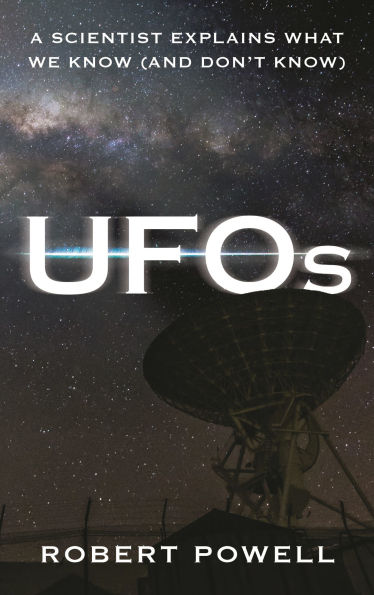Powell begins his book by familiarizing the reader with the history of UF's and he identifies the more enigmatic and interesting UFO sightings. He examines the characteristics of these sightings that argue against a prosaic explanation: extreme acceleration, electromagnetic interference, bending light, no obvious propulsion mechanisms, and a lack of interaction with the atmosphere. Powell discusses the recent events that have caused our government to change the term from UFO to UAP. Included is information never before released indicating the government possesses not just two videos but five videos from 2015 of UF's operating in the vicinity of the USS Roosevelt nuclear aircraft carrier.
Powell’s later chapters in the book discuss the extraterrestrial hypothesis considering the thousands of exoplanets that have been discovered in the last twenty years. Powell challenges the reader to consider all the implications that must be considered if intelligent life discovers us first. He looks at how we as individuals and as a society react to UF's. He documents actions taken by our military that include instances when we have fired on UF's.
Powell argues that it is time for a change in the study of UF's. The phenomenon has been with us for 75 years and we have learned very little as the decades have passed. The author makes the case for what needs to be done going forward. The solution he proposes will require a paradigm shift in our thinking and his book provides the information needed to understand that paradigm shift.
Powell begins his book by familiarizing the reader with the history of UF's and he identifies the more enigmatic and interesting UFO sightings. He examines the characteristics of these sightings that argue against a prosaic explanation: extreme acceleration, electromagnetic interference, bending light, no obvious propulsion mechanisms, and a lack of interaction with the atmosphere. Powell discusses the recent events that have caused our government to change the term from UFO to UAP. Included is information never before released indicating the government possesses not just two videos but five videos from 2015 of UF's operating in the vicinity of the USS Roosevelt nuclear aircraft carrier.
Powell’s later chapters in the book discuss the extraterrestrial hypothesis considering the thousands of exoplanets that have been discovered in the last twenty years. Powell challenges the reader to consider all the implications that must be considered if intelligent life discovers us first. He looks at how we as individuals and as a society react to UF's. He documents actions taken by our military that include instances when we have fired on UF's.
Powell argues that it is time for a change in the study of UF's. The phenomenon has been with us for 75 years and we have learned very little as the decades have passed. The author makes the case for what needs to be done going forward. The solution he proposes will require a paradigm shift in our thinking and his book provides the information needed to understand that paradigm shift.

UFOs: A Scientist Explains What We Know (And Don't Know)
222
UFOs: A Scientist Explains What We Know (And Don't Know)
222
Product Details
| ISBN-13: | 9781538173589 |
|---|---|
| Publisher: | Bloomsbury Academic |
| Publication date: | 04/02/2024 |
| Pages: | 222 |
| Product dimensions: | 6.10(w) x 8.80(h) x 0.80(d) |
